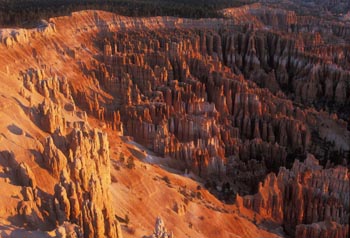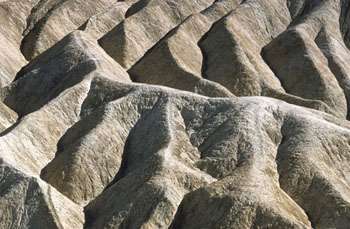 Landscape photography is perhaps the most popular pursuit of amateur photographers. It is also popular with professionals because landscape images are enduring and consequently make excellent wall art. A landscape is not as easy to define as it might seem. The word "landscape" means a representation of a section of land as seen from a particular viewpoint, but the situation becomes less clear when the scene includes water, coastal areas, people, animals or man-made objects such as buildings or towns. Some photographers insist on the use of terms such as "seascape" and "cityscape" to describe scenes including an element of open sea or a significant percentage of urban development. Others talk about "urban landscapes" when a scene is dominated by streets and buildings. Whether or not this confusion of terminology is significant is a matter of opinion. What is surely more important is how to create excellent images in any of these environments.
Landscape photography is perhaps the most popular pursuit of amateur photographers. It is also popular with professionals because landscape images are enduring and consequently make excellent wall art. A landscape is not as easy to define as it might seem. The word "landscape" means a representation of a section of land as seen from a particular viewpoint, but the situation becomes less clear when the scene includes water, coastal areas, people, animals or man-made objects such as buildings or towns. Some photographers insist on the use of terms such as "seascape" and "cityscape" to describe scenes including an element of open sea or a significant percentage of urban development. Others talk about "urban landscapes" when a scene is dominated by streets and buildings. Whether or not this confusion of terminology is significant is a matter of opinion. What is surely more important is how to create excellent images in any of these environments.
 In very broad terms, there are three different types of landscape photography - representational, impressionistic and abstract. However there are almost as many individual styles and interpretations within these three categories as there are photographers, so the categories themselves are difficult to define. Nevertheless, representational landscape work strives to capture the beauty of a scene as it exists at the time. The photographer finds the best viewpoint, composition and light, and tries to capture the scene at the optimum moment. Although no "artificial" elements are introduced, the resulting image is inevitably influenced by choice of lens, film, digital ISO speed, depth of field and so on. A example of this sort of approach can be seen in the image of Bryce Canyon at top left. The picture was taken at dawn without any attempt to manipulate the scene - apart from the use of Fuji Velvia film.
In very broad terms, there are three different types of landscape photography - representational, impressionistic and abstract. However there are almost as many individual styles and interpretations within these three categories as there are photographers, so the categories themselves are difficult to define. Nevertheless, representational landscape work strives to capture the beauty of a scene as it exists at the time. The photographer finds the best viewpoint, composition and light, and tries to capture the scene at the optimum moment. Although no "artificial" elements are introduced, the resulting image is inevitably influenced by choice of lens, film, digital ISO speed, depth of field and so on. A example of this sort of approach can be seen in the image of Bryce Canyon at top left. The picture was taken at dawn without any attempt to manipulate the scene - apart from the use of Fuji Velvia film.
Impressionistic landscape work is based upon a photographer's overriding experience of the surroundings at the time an image is created. Wind may be moving long grass in a particular manner, or water may be flowing in a particular direction. The photographer uses these elements, often in a way that exaggerates their effect, in an attempt to engender a similar feeling or impression in the mind of the viewer. The scene itself is less "real" than that produced in a representational image but may convey much more of the experience of being present. The image on the right, also taken at Bryce Canyon at dawn, was composed and exposed to exaggerate the drama of the early-morning light. Exposure was set for the back-lit mist, and the surrounding rocky ridges were consequently underexposed by several stops.
 Abstract landscape work uses the graphical elements of a scene to construct an image based upon the predominant natural shapes and forms, the way in which they fit together, their colours, and their position and significance within the overall space of the image. Shape and form are the dominant elements. The details of the scene itself may be obscured to the point of being unrecognizable, perhaps because principal elements are out of focus or silhouetted. In the scene at bottom left, taken in Death Valley, California, a long lens has been used from a high viewpoint to isolate the extraordinary forms of the rocks at Zabriskie Point. Their context within the broader landscape has been completely eliminated.
Abstract landscape work uses the graphical elements of a scene to construct an image based upon the predominant natural shapes and forms, the way in which they fit together, their colours, and their position and significance within the overall space of the image. Shape and form are the dominant elements. The details of the scene itself may be obscured to the point of being unrecognizable, perhaps because principal elements are out of focus or silhouetted. In the scene at bottom left, taken in Death Valley, California, a long lens has been used from a high viewpoint to isolate the extraordinary forms of the rocks at Zabriskie Point. Their context within the broader landscape has been completely eliminated.






